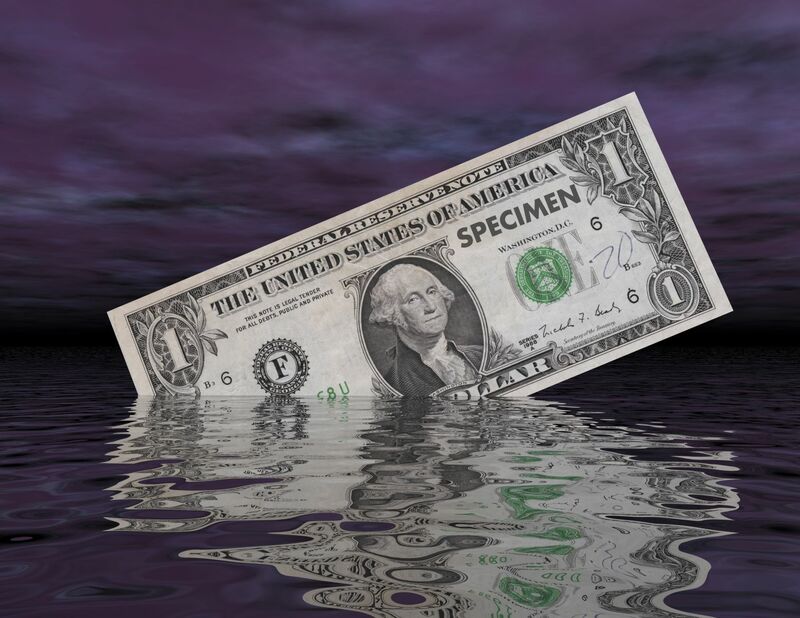
The dollar index (DXY00) on Monday fell by -0.14%. The dollar on Monday was under pressure from lower T-note yields. Also, strength in stocks on Monday curbed liquidity demand for the dollar. Losses in the dollar were contained after Monday’s U.S consumer credit report for November, which was stronger than expected, and after Atlanta Fed President Bostic said the Fed "is in a restrictive stance, and he’s comfortable with that.”
U.S. Nov consumer credit rose +$23.751 billion, stronger than expectations of +$8.550 billion and the most in a year.
Atlanta Fed President Bostic said the Fed "is in a restrictive stance and I'm comfortable with that, and I just want to see the economy continue to evolve and see inflation get to our 2% level." He added that he expects the Fed's first rate cut in Q3 of this year.
The markets are discounting the chances for a -25 bp rate cut at 5% for the next FOMC meeting on Jan 30-31 and a 67% chance for that -25 bp rate cut for the following meeting on March 19-20.
EUR/USD (^EURUSD) on Monday rose by +0.08%. The euro on Monday rose slightly on hawkish comments from ECB Governing Council member Vujcic, who said the ECB probably won’t cut interest rates before summer. Also, today’s report that showed a larger-than-expected increase in Eurozone Dec economic confidence to an 8-month high was bullish for the euro. Gains in EUR/USD were limited after German Nov factory orders rose less than expected.
ECB Governing Council member Vujcic said he expects inflation to slow gradually and that the ECB "is not talking about cutting interest rates now, and probably won't before the summer."
The Eurozone Dec economic confidence indicator rose +2.4 to an 8-month high of 96.4, stronger than expectations of 94.2.
The Eurozone Jan Sentix investor confidence index rose +1.0 to an 8-month high of -15.8, right on expectations.
German Nov factory orders rose +0.3% m/m, weaker than expectations of +1.1% m/m.
German trade news was better than expected as Nov exports rose +3.7% m/m, stronger than expectations of +0.5% m/m and the biggest increase in 1-3/4 years. Also, Nov imports rose +1.9% m/m, stronger than expectations of +0.4% m/m and the biggest increase in 9 months.
Swaps are pricing in the chances for a -25 bp rate cut by the ECB at 5% for its next meeting on January 25 and 48% for the following meeting on March 7.
USD/JPY (^USDJPY) on Monday fell by -0.28%. The yen on Monday posted moderate gains and found support from lower T-note yields. Trading activity in the yen was muted, with markets in Japan closed Monday for the Coming-of-Age holiday.
February gold (GCG4) Monday closed -16.30 (-0.80%), and Mar silver (SIH24) closed -0.005 (-0.02%). Precious metals posted moderate losses on Monday, with gold falling to a 3-1/2 week low. Doubts about interest rate cuts from the Fed and BOE are undercutting precious metals prices after last Friday’s stronger-than-expected U.S. Dec payrolls report and after Monday’s comments from ECB Governing Council member Vujcic who said the ECB won’t cut interest rates before the summer. Also, long liquidation pressures weighed on gold after long gold holdings in ETFs fell to a nearly 4-year low last Friday. Silver prices also came under pressure after German Nov factory orders rose less than expected, a sign of weakness in industrial metals demand. Precious metals recovered from their worst levels Monday as the dollar weakened and global bond yields fell.
On the date of publication, Rich Asplund did not have (either directly or indirectly) positions in any of the securities mentioned in this article. All information and data in this article is solely for informational purposes. For more information please view the Barchart Disclosure Policy here.






